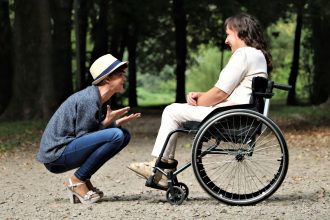Life after a brain injury is often described as “a new normal.” Recovery does not end in the hospital or rehabilitation center—it continues at home, at work, and in the community. For many survivors, adjusting to lasting physical, cognitive, and emotional changes is just as challenging as the injury itself. Families and caregivers also face new responsibilities as they help their loved one navigate daily life.
Living with a brain injury is not only about medical care—it’s about regaining independence, rebuilding routines, and finding meaningful ways to live well.
Adjusting to Daily Life
Even simple daily activities may feel overwhelming after a brain injury. Survivors often face challenges such as:
- Fatigue that makes even small tasks exhausting
- Memory problems that make following routines difficult
- Mobility issues requiring adaptive equipment
- Speech or communication difficulties that complicate social interactions
Occupational therapists often play a key role in helping survivors relearn basic skills and adapt their environment with tools like pill organizers, smart-home devices, or mobility aids.
See more in Daily Life After Brain Injury.
Coping Strategies and Mental Health
Brain injuries do not only affect the body—they impact mood, emotions, and identity. Survivors may experience:
- Depression and anxiety
- Irritability or mood swings
- Difficulty coping with loss of independence
- Social withdrawal
Counseling, peer support groups, mindfulness training, and medication (when appropriate) can help. Families also benefit from therapy to process grief and stress.
Learn more in Coping Strategies and Mental Health After Brain Injury.
Returning to Work and School
Reintegration into work or school is a major milestone. However, challenges include:
- Difficulty with memory, focus, or executive functioning
- Physical limitations that affect stamina or mobility
- Communication barriers in classrooms or offices
- Employers or schools unfamiliar with brain injury accommodations
Vocational rehabilitation specialists help survivors return to meaningful roles by adjusting schedules, providing adaptive technology, or recommending modified duties.
See Return to Work and School After Brain Injury.
Driving, Sports, and Activity Restrictions
Driving after a brain injury requires medical clearance. Even mild impairments in reaction time, vision, or judgment can increase accident risk. Some survivors regain driving independence with training and vehicle modifications, while others transition to alternative transportation.
Sports and high-risk activities may be restricted to prevent further injury. Athletes must follow concussion protocols, while people with severe injuries may need permanent lifestyle adjustments.
Read more: Driving, Sports, and Activity Restrictions.
Independent vs Assisted Living Options
Housing decisions are often part of the recovery process. Options may include:
- Independent living with minimal support for those with mild deficits.
- Supported housing with occasional assistance from aides or family.
- Group homes or assisted living for survivors with significant needs.
- Skilled nursing facilities for those requiring 24-hour medical care.
Social workers and case managers can guide families through financial, legal, and community support considerations.
See Living Options After Brain Injury.
Family and Caregiver Support
Caregivers are often called “the hidden patients.” While supporting a survivor, they may face burnout, financial strain, and emotional stress. Resources for caregivers include:
- Training on how to help with rehabilitation exercises at home
- Support groups for emotional connection
- Respite care services to prevent exhaustion
- Legal and financial assistance for managing long-term care
For more, see Family and Caregiver Support.
Social Participation and Community Life
Beyond medical care and daily tasks, survivors need opportunities for connection, purpose, and growth. Participation in community programs, adaptive sports, volunteer work, and advocacy groups helps rebuild identity and confidence.
Supportive communities are key to improving quality of life. Many survivors thrive when surrounded by understanding peers, professionals, and family members who recognize both challenges and strengths.
Technology and Tools for Independence
Living with a brain injury today is supported by technology, such as:
- Reminder apps for medications and appointments
- Smart home devices for lighting, safety, and routines
- Communication aids for speech difficulties
- Adaptive vehicles for transportation
These tools can significantly enhance independence and reduce caregiver burden.
Conclusion
Living with a brain injury means adapting to new realities, but it does not mean giving up hope. With rehabilitation, support networks, assistive technology, and community resources, survivors can achieve fulfilling lives. Families and caregivers, though deeply affected, can find resilience and strength through education, support, and shared progress.
Every journey is different—but recovery, adaptation, and meaningful participation are possible at every stage.







